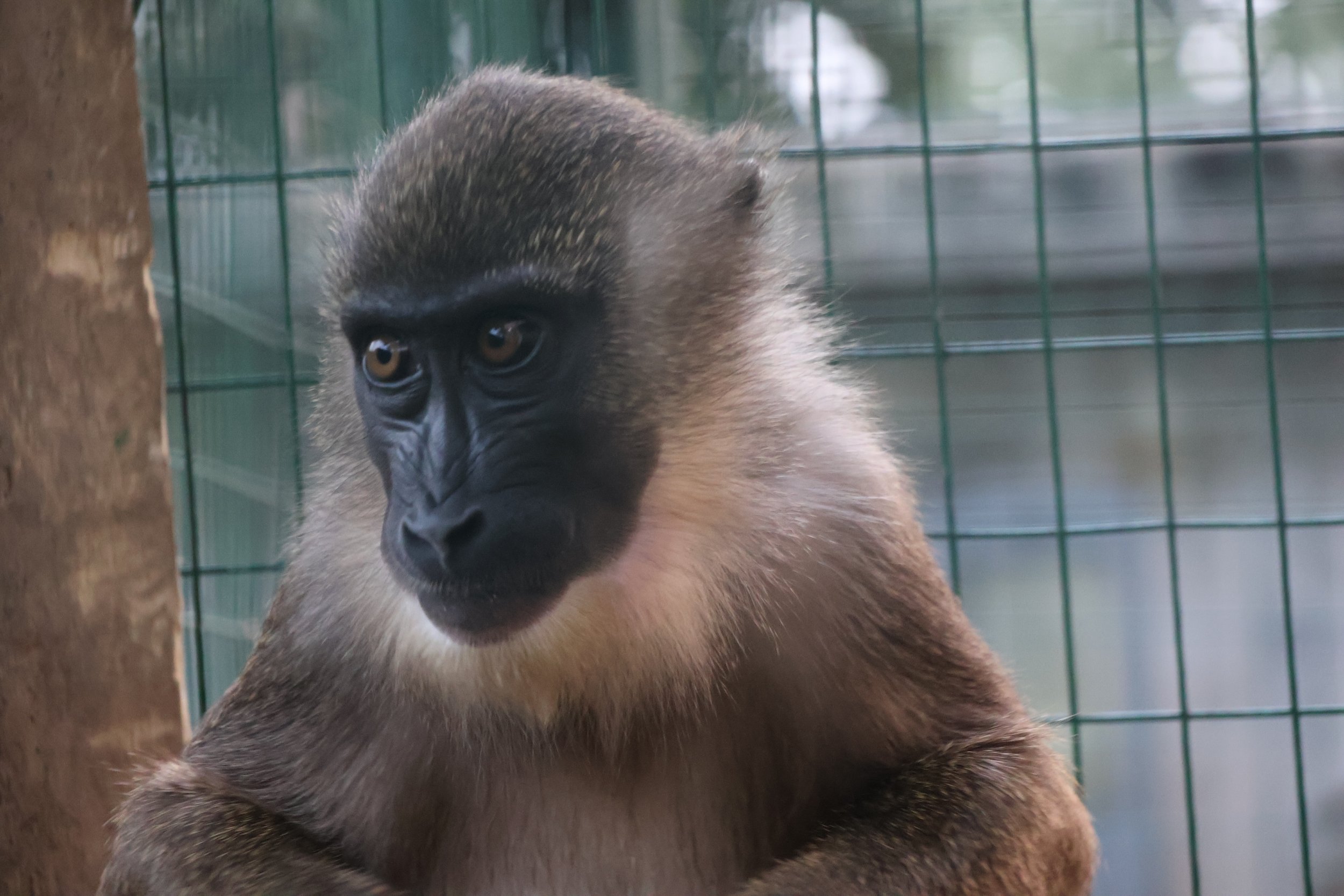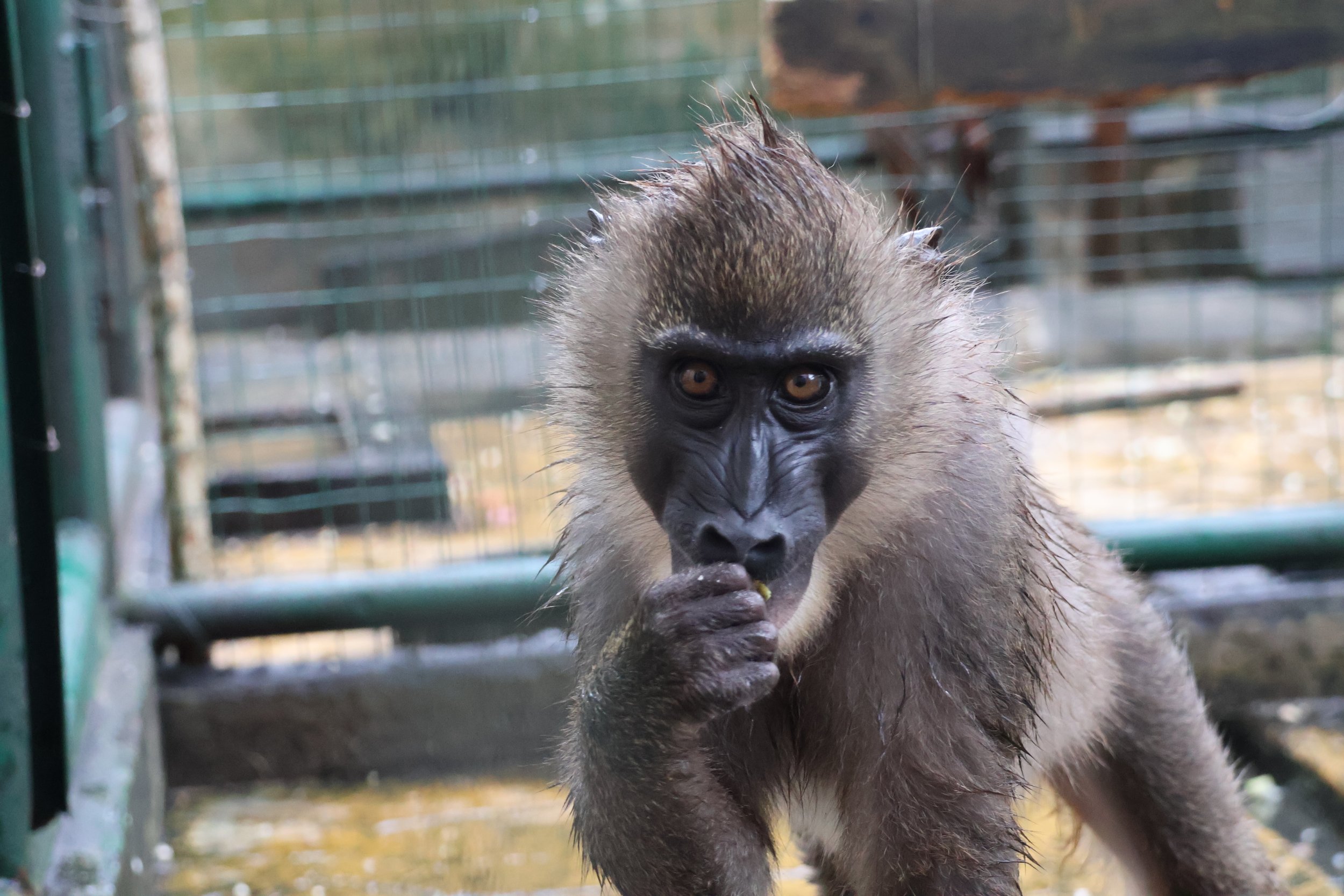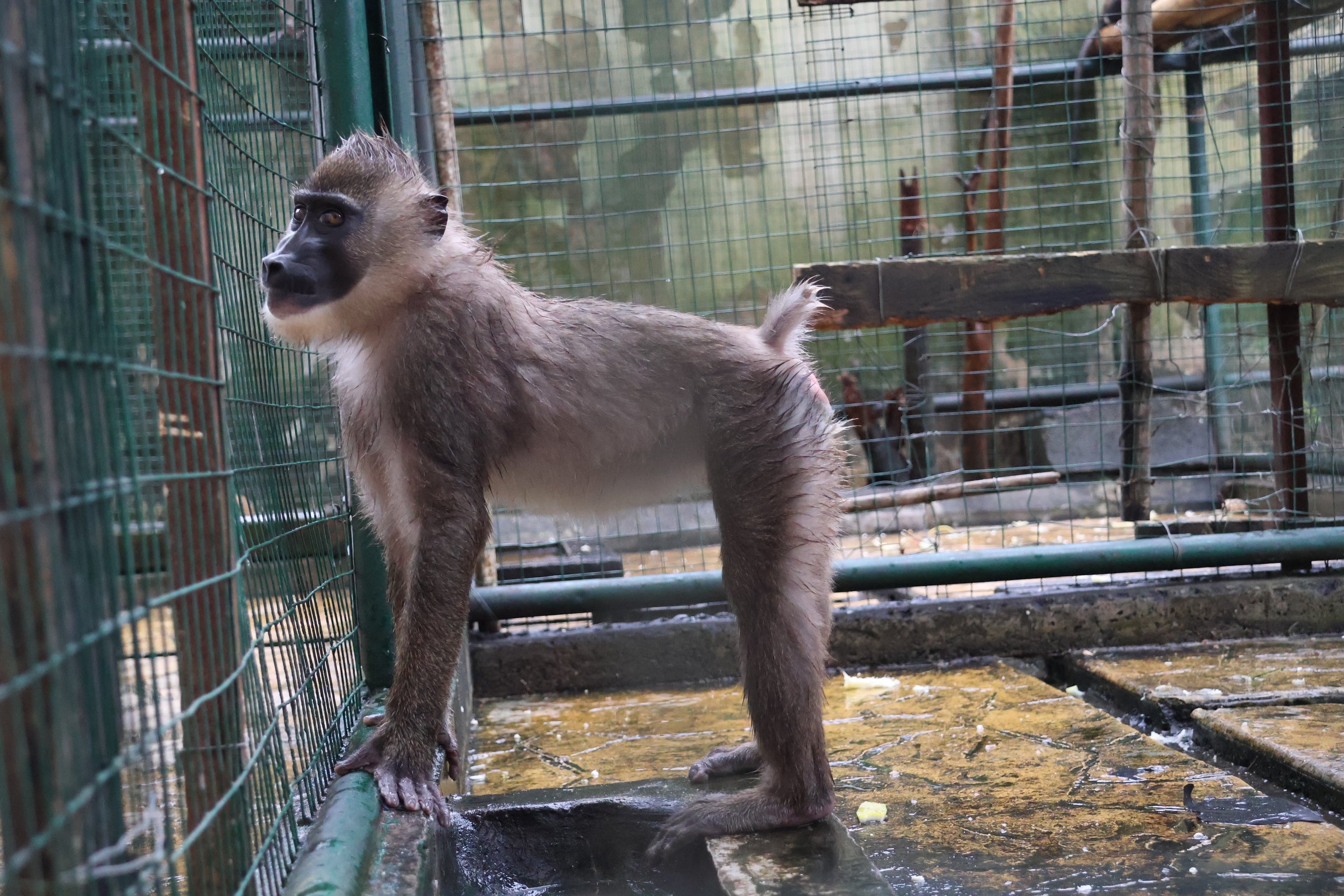Drill Monkey: The Neglected Old-World Monkey
I have been living and working in Nigeria for almost a year now. Outside of my work, I was fortunate to get the opportunity to volunteer with an organization that rescues critically endangered species from slaughterhouses, where they are at risk of becoming bushmeat—a widespread issue in Nigeria. This, along with deforestation, has caused the population of several species to decline, pushing them to the brink of extinction.
Being part of this organisation gave me the unique opportunity to spend time with some of the rarest animals on the planet, found mainly in rainforests. One such animal is the drill monkey.
An Introduction:
Drills are primates in the Cercopithecidae family, also known as old-world monkeys. Old-world monkeys are native to Africa and Asia, inhabiting various terrains and climates, such as tropical rainforests, savannas, shrublands and mountainous terrain. While old-world monkeys once roamed freely in Europe, today, they are found only in Gibraltar.
There are two subfamilies in Cercopithecidae: cercopithecinae, which includes monkeys with simple digestive systems and cheek pouches, and Colobinae, which includes monkeys with guts anatomically specialised for feeding on leaves. Some Old World monkeys, like the red-eared guenon, are arboreal, meaning they are found mostly on trees, while others, like drill monkeys, are terrestrial, meaning they move mainly on land. Old-world monkeys differ from new-world monkeys in several ways, such as having only two premolars and downward-pointing nostrils.





More About Drills:
Drills are related to baboons but even more closely related to mandrills. Although they mostly move on land and are mainly terrestrial, they can also climb trees.
Drills are an extremely rare sight in the wild, even though they move in groups of 20-30 monkeys. The groups are composed of males and females, but there is an alpha male who becomes the leader and the protector of the group. Males usually develop large canines (over 2 inches) and have great jaw strength. Drills are found in captivity in different parts of the world. They are a difficult species to contain owing to their big size and strength.
Drills are a unique primate that is found only in Africa! Nigeria, the Island of Bioko (Equatorial Guinea), and Cameroon are the only places they are found in the wild. They are critically endangered species, with habitat loss and hunting for bushmeat being major reasons for their low numbers. Although IUCN has listed them as endangered, the rampant slaughter for meat and ongoing habitat destruction have caused their population to dwindle dramatically. Due to the lack of recent, accurate population censuses, I believe IUCN should classify them as critically endangered.
Appearance:
Drill monkeys have a black, shiny face with very smooth skin texture. I can personally vouch for this, as I’ve spent considerable time with two drill monkeys. Like all old-world monkeys, they have downward-facing nostrils. Their fur is primarily brown, with patches of white in the arms, the inner side of the legs, and the belly region.
From birth until about three months old, their faces are pink. Around the fourth month, their faces begin to turn black, becoming fully black and shiny by the eighth or ninth month. They have a small puffy tale, and their rear end is pink when they are young. As they mature, this area becomes striking blue, pink, and red.
Characteristics:
Drill monkeys have cheek pouches where they store food to eat later at regular intervals. The muscles in the cheeks expand as they fill them with food, allowing them to store up to twice the amount of food they can have in one sitting. Since drill monkeys spend most of their time foraging on the forest floor, these pouches help them store food while searching for food until they have enough.
The adult population generally focus on finding food while the youngsters play around. Interestingly, If you come close to their face and blow on them, they will open their mouths. This is more prevalent in young ones, and this behaviour seems to decrease as they age. I believe that mothers may feed their young ones through this method. It appears to be instinctive behaviour rather than a learned one, as we observed in the drill monkey we rescued, who got separated from his mother at a very young age.
Other Observations:
Drill monkeys seem to have a hierarchical social structure. This stems from two observations. Firstly, they live in groups consisting of both males and females, with one male acting as the leader. Secondly, we noticed specific behaviours among the rescued drills in our care. They would only allow humans they were familiar with to approach them, and even among those familiar faces, they would listen to only one person and not allow other humans to touch or get close to them. If another familiar person tried to approach, they would become angry. However, this wasn’t the case if the same human approached them alone.
Drill monkeys recognize humans by their smell, which they develop by touching the person’s skin with their hands and then smelling it. They tend to do this repeatedly when they first meet someone before becoming fully comfortable. Once they know you, they can recognise you from a distance and will express their happiness by dancing and jumping around.
Drill monkeys can get angry very fast if you annoy them, and they remember it for a long time. However, they are loyal and will start accepting food directly into their mouth if they trust you. If they haven’t developed the trust, they will take the food with their hands and smell it before putting it in their mouth. Interestingly, if you are eating, they might try to open your mouth with their fingers to look for food inside. I believe these are behaviours they typically engage in with their partners or siblings.
Like many primates, drill monkeys love body scratches and rubs and enjoy playing with their peers. They are intelligent primates, perhaps even more so than other members of the old-world monkey family. For instance, the rescued drills quickly learnt how to open their cages by observing the caretakers.
This is an excerpt from my upcoming eBook on drill monkeys, wherein I dive deeper into their world and reveal more interesting information about them. It is a privilege to spend time with them, and I hope we can protect them for future generations.